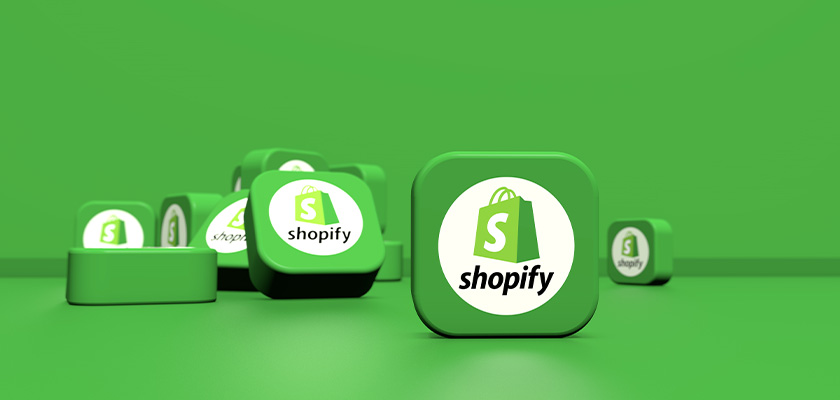Deep Dive Into Shopify 2.0 to Empower Clients
Last year, Shopify Unite 2021 announced its biggest, boldest update to date, the new Shopify 2.0 store. This news has not only taken the tech industry by storm, but it has also opened up Pandora’s box of creative possibilities...

Last year, Shopify Unite 2021 announced its biggest, boldest update to date, the new Shopify 2.0 store. This news has not only taken the tech industry by storm, but it has also opened up Pandora’s box of creative possibilities for Shopify users.
What Is the Shopify Online Store 2.0?
Creativity is at the forefront with this update, and because it is a lot to digest, Blue Door will outline what all of the Shopify terminologies mean using an example that just about everyone can relate to – redecorating a home.
Imagine an empty room, this is your Page. Now, imagine the general design direction you want to follow; the aesthetic, the paint – this is your Theme. Next, let’s furnish this room. Think of Meta Fields as furniture.
Pieces of carefully selected furnishings you can move wherever you please. Finally, think of all the cool gadgets you can add to your new, Pinterest-worthy room. Your smart systems, electronics, all the additional things.
These, are your apps.
Pretty cool right? Now duplicate this for an entire home. And not just any home, your dream home. A dream home that also doubles as your business and your livelihood. Still cool, but a lot of work. And if you don’t have the capacity to take it on, don’t worry. Blue Door does, and Blue Door‘s really good at it.
Alright, back to it. As Blue Door mentioned above, customization is at the forefront of this update. It provides new opportunities for creatives to not only tailor-make their websites, but to build themes, apps, and integrations that act as code-free plug-and-play solutions.
Endless updates mean endless possibilities and the creative team at Blue Door couldn’t be more excited to leverage their Shopify experience to set your store’s framework up for success.
Not only will your shop have the essentials like responsive web design, SEO optimization, SKU infrastructure, and seamless navigation, but Blue Door can also elevate your composition strategies and design a website that adheres to your brand message.
This will give you the structure you need to ensure the future success of your website and business.
Primary Components of Shopify 2.0
The new Shopify 2.0 Store update can be categorized into three main components: Themes (aesthetic), Meta Fields (furniture), and Apps (cool technology add-ons)
Themes
Essentially, there is still the easy-to-use theme editor for Shopify. However, the actual theme templates will have sections across all Pages, Collections, and Products!
In the past, Shopify themes have had moderate flexibility when it came to customization with minor workarounds that developers could leverage to jazz up cookie-cutter themes). Making creativity limited.
Fast Forward: Themes are a lot more modular. Users are given much more control when it comes to page positioning and content. Shopify users will be able to create more innovative themes, while developers can focus on making new, content-specific sections, and designers can make the whole thing move with purpose.
This allows your store to be as unique as your product.
When identifying which theme is right for you, try and stick to the new 2022 themes, as the template library will feature both new and old designs. Some designs to watch out for include the following:
Meta Fields
Shopify’s Metafields let you add additional information boxes relating to your products, variants, collections, customers, orders, and much more to your store’s pages. Just like furniture in a room. For example, a variety of delivery options on your checkout page.
By default, Shopify offers you great data storage in your store admin, but that’s common for all the stores. Therefore, using Shopify 2.0 Metafields you can store unique data about any object you want in your store that can vary across products and pages.
This allows Blue Door’s store to run faster than before, which in turn, helps support customer usability.
Applications
With great apps come great responsibilities. Not only are there more applications with Shopify 2.0, but App developers can now upload their Applications directly to the Shopify Online store with theme app extensions.
Application blocks can be added, removed, and configured directly from the theme editor without having to touch any code. This means uninstalls are also cleaner, meaning that the ghost code is automatically removed to avoid any future app install conflicts and issues.
Back in Stock streamlines the alert process for customers requesting out-of-stock items. When you restock products, waiting customers are alerted instantly by Email or SMS to bring them back to your store and complete their purchase.
Lucky Orange is a very easy-to-use website analytics tool. Customers leverage Lucky Orange to prevent shopping cart abandonment & increase conversion rates on Shopify stores.
The Shop channel is your control center for managing and optimizing the Shop app. Enable Shop’s ecosystem of features, create your brand experience, and track Shop’s performance.
Offset calculates the total emissions generated by your shipped orders, thus, calculating your offset cost. If you want to neutralize your shipping emissions that contribute to climate change, this is the app for you!
Templated Shopify Web Development services enable you to partner with an agency that knows exactly what they’re doing for a fraction of the cost of a full web development build.
In conclusion, the Shopify 2.0 Update is designed to liberate creativity and streamline design. This is also important for Shopify stores outside of the e-commerce space.
As this becomes more common as Shopify enhances its platform capabilities, Blue Door is seeing landing pages, NFPs, and portfolios being built- beautifully on Shopify every day. Interested?

 ValVades
ValVades 









![How to Create an SEO Strategy for 2021 [Template Included]](https://blog.hubspot.com/hubfs/create-seo-strategy.jpg#keepProtocol)




















